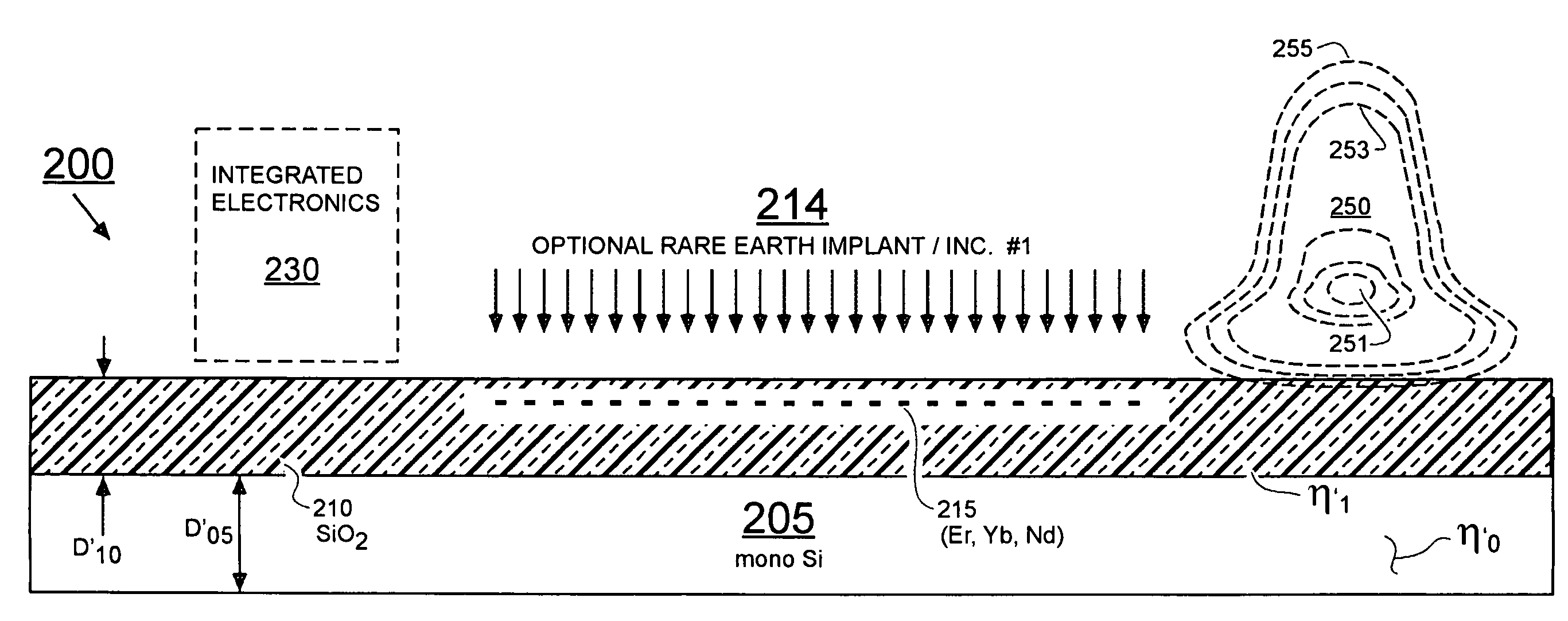Integration of rare-earth doped amplifiers into semiconductor structures and uses of same
a rare earth doped amplifier and semiconductor technology, applied in the direction of semiconductor lasers, optical elements, active medium materials, etc., can solve the problems of real-world fiber loss and dispersion, loss of optical signal strength and/or waveform integrity of optical signals traveling through real-world fibers, and limit the applicable situations in which soa's may be deployed, etc., to achieve low cost and low cost of mass production , the effect of reducing passive waveguide loss
- Summary
- Abstract
- Description
- Claims
- Application Information
AI Technical Summary
Benefits of technology
Problems solved by technology
Method used
Image
Examples
Embodiment Construction
[0032]FIG. 1 is a combination of introductory block diagram and a cross-sectional side view of a conventional SOI (silicon on insulator) integrated device 100 whose upper silicon layer has been patterned to define a pair of rib-style optical waveguides. The rib portions are identified as 140 and 142. An integrated electronics circuit is schematically shown to be present in or around region 130.
[0033]More specifically, the illustrated device 100 is structured to have a monocrystalline silicon substrate 105 having a respective first refractive index, n0, and a respective first thickness, D05. A silicon dioxide layer 110 has been thermally grown or has been otherwise formed on the substrate 105 to provide a second layer of a respective second refractive index, n1, and a respective second thickness, D10. A polysilicon layer 120 (it could be or include amorphous material) has been provided on top of layer 110 by, for example, chemical vapor deposition (CVD) or otherwise to thereby provid...
PUM
 Login to View More
Login to View More Abstract
Description
Claims
Application Information
 Login to View More
Login to View More - R&D
- Intellectual Property
- Life Sciences
- Materials
- Tech Scout
- Unparalleled Data Quality
- Higher Quality Content
- 60% Fewer Hallucinations
Browse by: Latest US Patents, China's latest patents, Technical Efficacy Thesaurus, Application Domain, Technology Topic, Popular Technical Reports.
© 2025 PatSnap. All rights reserved.Legal|Privacy policy|Modern Slavery Act Transparency Statement|Sitemap|About US| Contact US: help@patsnap.com



